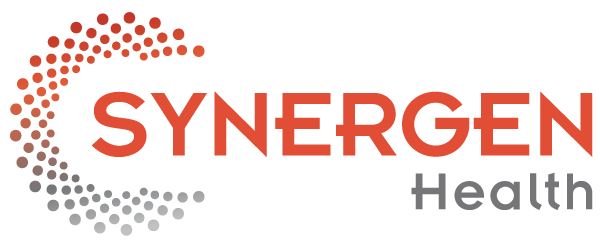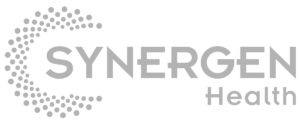In healthcare, disruption isn’t a question of if…it’s when.
For revenue cycle leaders, the ability to stay operationally resilient has become a critical differentiator—determining whether an organization can navigate disruption without compromising cash flow, compliance, or patient experience.
Operational resilience is about building systems and processes that can absorb shocks (whether human, technical, or regulatory) and bounce back without derailing financial operations.
Healthcare organizations today face a wide range of threats to operational continuity:
- Staffing shortages and burnout, especially in billing, coding, and AR follow-up roles
- Frequent payer changes, including prior authorization requirements or documentation rules
- Cybersecurity threats, such as ransomware attacks that interrupt claim submission or remittance data
- Denials and delays, increasingly driven by tighter payer policies and preventable errors
- Outdated systems, which limit visibility, automation, and coordination across departments
Unless the right safeguards are in place, each of these challenges can disrupt the revenue cycle and impact collections.
1. Automate Routine, Repeatable Tasks
Resilient operations minimize dependence on manual, repetitive work. Automating tasks like eligibility checks, claim status follow-ups, and appeal letter generation helps maintain workflow continuity during disruptions—whether due to staff shortages, system outages, or unexpected claim volume spikes.
For example, using automated eligibility verification at the point of scheduling can reduce downstream denials by flagging inactive coverage or missing prior authorizations before the patient is even seen. Similarly, claim status bots can routinely check payer portals for updates, freeing up staff for more complex follow-ups. Automation can also support appeals by generating templated responses based on denial codes and payer rules, helping teams meet tight deadlines with less manual effort
2. Build Denials Prevention Into the Front End
A high percentage of denials stem from preventable errors like missing prior authorizations, incorrect insurance information, or data mismatches. In fact, they were one of the main drivers of denied claims in 2024.
When denials rise during periods of disruption, the strain compounds.
Building resilience starts with reducing the number of denials that occur in the first place. That means strengthening front-end processes with eligibility verification, real-time edits, and staff training to ensure data accuracy before the claim is ever submitted.
Check out this in-depth explanation of how to develop a denials prevention plan.
3. Use Analytics to Predict and Prioritize
Disruption often forces teams to do more with less. Having the ability to quickly identify the most impactful issues—and act on them—is key to maintaining revenue flow.
Analytics platforms can help RCM leaders track denial trends, payer behavior, aging A/R, and team performance. Predictive insights allow teams to focus on high-risk claims and prevent backlogs before they happen. Visibility isn’t just helpful, it’s essential for making smart decisions under pressure.
4. Harden Your RCM Infrastructure Against Cyber Disruption
The 2024 Change Healthcare cyberattack was a wake-up call for many in the industry. In just days, thousands of providers lost access to their primary clearinghouse, disrupting claim submission, remittance processing, and revenue flow. Organizations without contingency plans were left scrambling.
Operational resilience must now include cyber resilience. That means:
- Having multiple clearinghouse relationships or backup submission pathways
- Maintaining internal tools for claim formatting and transmission
- Tracking claim submission and remittance methods to support audit trails
- Training teams on how to quickly pivot to paper claims or alternate workflows
Cyberattacks are unpredictable, but the ability to recover from them efficiently is entirely within your control.
5. Invest in Cross-Training and Process Standardization
When only one person knows how to manage a specific payer’s claims or appeal a complex denial, you’re vulnerable. Cross-training staff across roles, building standardized workflows, and documenting procedures ensures knowledge isn’t siloed, and operations don’t stall when someone is out or transitions.
This kind of redundancy builds muscle into your revenue cycle, allowing teams to shift roles or cover gaps during times of change without missing a beat.
6. Partner for Scalability
Some disruptions require more than internal adaptation, they call for scalable external support. Whether you’re responding to surging volumes, high denial rates, or new compliance requirements, having a trusted, end-to-end RCM partner can expand your capacity without sacrificing control.
A strong partner brings technology, expertise, and people resources together in a way that allows you to flex with demand and respond quickly to whatever comes next.
Building Operational Resilience in Your Organization
Resilience in revenue cycle management isn’t about avoiding disruption, it’s about being ready for it. Whether it’s a staffing shortage, a payer policy shift, or a full-blown cyberattack, healthcare organizations need systems that can adapt and recover quickly.
Investing in automation, predictive analytics, cybersecurity preparedness, and flexible staffing models helps RCM leaders build the operational backbone their organizations need to weather change and maintain performance.
Wondering how resilient your revenue cycle really is? Request an opportunity assessment, we’ll discover what’s working, what’s vulnerable, and how to strengthen your operations for whatever comes next.

